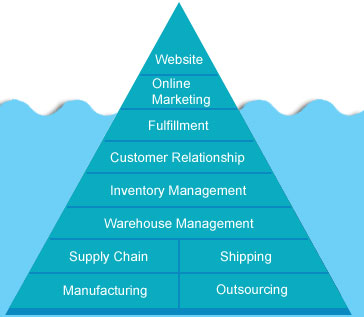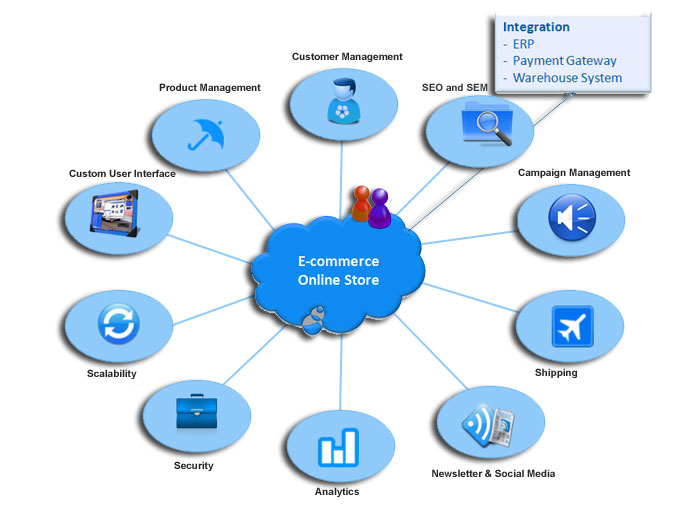 E-commerce is a waking giant in Indonesia today, with a multimillion-dollar future, according to the Indonesia Internet Association. The number of domestic Internet users is around 80 million and this number is expected to double in just three years. A big driver of this growth is cell phones and smart devices, with many having their first Internet interaction via these devices rather than PCs or laptop computers.
E-commerce is a waking giant in Indonesia today, with a multimillion-dollar future, according to the Indonesia Internet Association. The number of domestic Internet users is around 80 million and this number is expected to double in just three years. A big driver of this growth is cell phones and smart devices, with many having their first Internet interaction via these devices rather than PCs or laptop computers.
With 220 million mobile phone subscriptions in a population of 240 million people, and Internet penetration currently at around 30 percent, the market is spurring the triple-digit growth of various e-commerce sites.
For many companies, defining an online strategy is still very challenging. In order to be successful they need to fully understand how their businesses can benefit from e-commerce and to be able to assess the financial and organizational implications of what it takes to implement their online strategy.
Implementing an online store is not like buying a new piece of equipment or investing in an advertising campaign. It is more like opening a new store. As in a bricks and mortar store, where a customer can browse through the merchandise, ask the staff questions and then eventually buy something, it is the same for an e-commerce website. In order to make products and services available online, to enable your customers to pay for them, and then for you to deliver them, there has to be more than just designing an attractive website.
What you see of an e-commerce website is often the end result of a complex process to deliver products or services to you over the Internet. In fact, it could be compared to an iceberg. The 10% that you can see is merely the Web Design and Online Marketing, and the remaining 90% comprises of the backend processes which include Fulfillment, Customer Relationship, Inventory Management, Warehouse Management, Supply Chain, Shipping, Manufacturing, and Outsourcing.
Think, Plan, Do, Review: Planning is key. The online store may be an extension of an existing business or it may be an entirely fresh venture – either way, having a plan with Goals, Targets and costs is key to success – as the old adage goes – ‘failing to plan is planning to fail’.
An e-commerce technology partner can be invaluable and can accelerate your project by providing blueprints, strategy and components. But what exactly goes into an e-Commerce website plan?
E-Commerce is driven by the software, so the exact way it works depends on the shopping cart software selected and the business processes around it. There are several components, however, that make up any online shopping cart solution:
- Domain Name – The starting point which reflects your brand or business and needs to be easy to remember and find online.
- Web Hosting – a good online store is dependent on secure and scalable hosting servers. Determining factors include support, reliability, bandwidth, features, and cost.
- Merchant Dashboard – The dashboard is the tool to manage the online store and to set up your products, sales orders, customer data and reports. It’s the brain of the store.
- Product Catalog – This is what the customers see on your site find out about the products sold.
- Shopping Cart – The shopping cart is used by the customers to place orders. Customers add the products they want to purchase to the cart, provide information about shipping and payment, then submit the order
- Payment Processing – Accepting payments with a payment gateway is the backbone of any online store; without it, customers can’t place orders. The shopping cart integrates seamlessly with the payment gateway and merchant account providers, as well as online payment services such as PayPal and Google Checkout.
- Shipping – Once the order process is completed, the products need to picked and prepared for shipping to the customer for order fulfillment and even returns.
- Tax Calculation – Calculating, collecting, and paying appropriate sales tax is another consideration and dependent on the laws where the business is.
- Customer Service – In the virtual online space, customer service is the key to success through focus on delivering on basic promises and meeting expectations.
- Search Engine Optimisation and Advertising – Bringing customers to online store is a critical for sales. Search Engine Optimisation is making sure that the site and its products show up in the popular search engines, such as Google, Ask, and Yahoo!. E-mail marketing, particularly to customers who’ve bought from you before is an excellent advertising tool.
The world of e-commerce is constantly evolving, and fast. Customer expectations have increased dramatically, thanks to the rise of social and mobile, and many online retailers are scrambling to keep up. Consumers can now shop anywhere at any time, whether from their PC or mobile devices.
Emerging web technologies allow the retailer to interact with customers in much the same way as they would in a store. By becoming better acquainted with the customer and tailoring the experience to the shopper’s personal taste, retailers can present products of interest. Websites will already ‘know’ what customers are looking for, even before they browse. Sites will eventually become so honed to the personal taste of the individual that everywhere a person shops will be a next-generation experience, built just for them.
The day is not far off when the online shopping experience will surpass any service or offering that is available in a store. The possibilities with e-commerce are endless.





